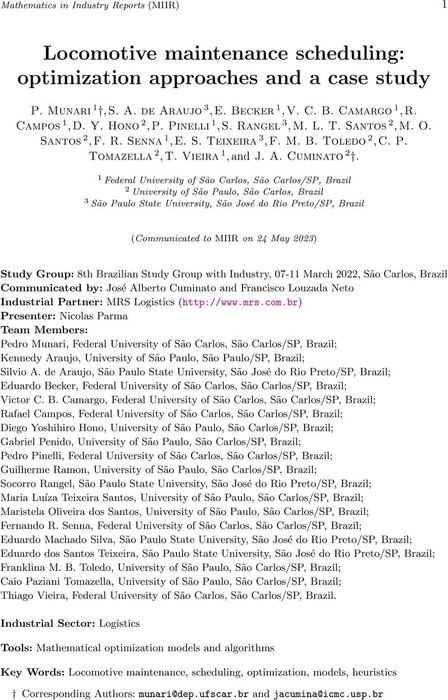Abstract
The Locomotive Maintenance Scheduling Problem arises in the planning and control operations in railroad companies. In this problem, locomotives are parked in yards adjacent to maintenance shops where various maintenance tasks are performed. These shops have limited and specific service stations for each type of maintenance. The goal is to schedule locomotives to service stations aiming at satisfying the locomotive availability targets as well as reducing the backlog for unavailable locomotives by the end of the planning horizon. Despite its practical relevance, this problem has received limited attention in the literature, particularly regarding the development of decision-making tools. To reduce this research gap, we propose mathematical models and a heuristic approach based on the real-world case of MRS Logistics, a Brazilian railroad company. Computational experiments using data provided by the company indicate the effectiveness of the proposed models and heuristic, showing potential improvements for the company's operations
Content



![Author ORCID: We display the ORCID iD icon alongside authors names on our website to acknowledge that the ORCiD has been authenticated when entered by the user. To view the users ORCiD record click the icon. [opens in a new tab]](https://www.cambridge.org/engage/assets/public/miir/logo/orcid.png)



